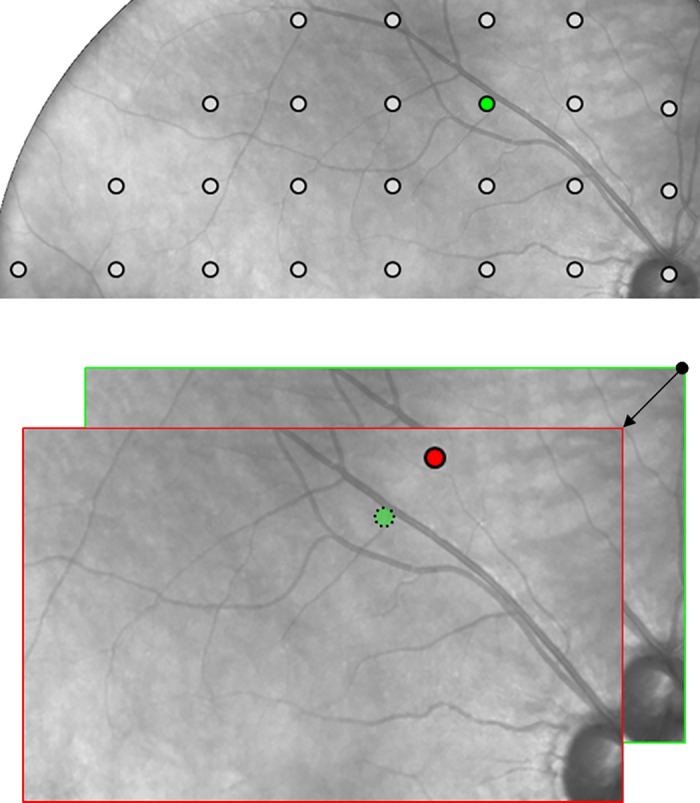Fig 2. Eye tracking compensation.

(A) The green dot shows the expected presentation position on the retina of one of the 24–2 measurement locations. (B) The red dot shows the actual presentation position in presence of a 3-degree eye movement at the time of presentation (see arrow) and in absence of a compensation mechanism: the red dot is where the HFA would actually measure sensitivity, without a chance to time-correlate presentation of this stimulus with the information provided by the gaze tracker. The use of a 25 Hz retinal tracker instead, enables Compass to maintain the expected presentation position even in presence of wide and fast eye movements.
